Samson Go Mic
Rated 4.50 out of 5 based on 4 customer ratings
$36.99
Get crystal clear audio with Samson Go Mic – the perfect travel-friendly microphone for recording or streaming on the go!
Out of stock
Description
Samson Go Mic Microphone is one of the most highly regarded microphones in the market today, and it is the perfect solution for those looking for a portable, versatile, and affordable microphone. This mic is specifically designed for people who are always on the go, but who still require high-quality and professional-grade sound recordings.
One of the most striking features of the Samson Go Mic is its compact size. It is incredibly small and lightweight, making it easy to carry around in your pocket or bag. Despite its small size, this mic has a rugged design, ensuring that it can withstand harsh environments and heavy usage.
The Go Mic features two pickup patterns, making it a versatile microphone that can be used for a wide range of purposes. The first pattern is cardioid, which is perfect for recording voiceovers, podcasts, and music applications. The second pattern is omnidirectional, ideal for capturing sounds in a broad range of environments, from live events to live-streaming sessions.
One of the most impressive features of the Samson Go Mic is its incredible sound quality. It produces exceptional audio that is both clear and detailed, with minimal background noise or distortions. This is due to its high-quality condenser capsule and advanced digital converter, which ensures that your recordings are of the highest quality possible.
Another standout feature of the Samson Go Mic is its plug-and-play USB connectivity. This means that the mic can be easily connected to a computer or laptop without the need for additional drivers or software. The mic also features a 3.5mm headphone output, allowing for real-time monitoring, and a switchable zero-latency monitoring mode, enabling you to hear your audio in real-time.
Whether you are a podcaster, YouTuber, musician, or video producer, the Samson Go Mic is an excellent choice for those looking for a high-quality, versatile microphone. It is compact, reliable, and affordable, and it guarantees professional-grade audio recording from any location.
In conclusion, the Samson Go Mic is an ideal option for anyone seeking a portable, professional-grade microphone. Its compact size, advanced technology, and versatile features ensure that it is suitable for a wide range of applications, and its affordable price point makes it accessible to anyone who needs it. Whether you are working from home or on the go, the Samson Go Mic is an excellent option to meet all your audio recording requirements.
Singing
Samson Go Mic properties
| Product name |
Go Mic |
| Type |
Microphone |
| Suitable For |
Singing |
| Polar Patterns |
Cardioid, Omniderectional |
| Microphone Type |
Condenser |
| Wireless |
No |
| Mono/Stereo |
Stereo |
| USB |
Yes |
Frequently Asked Questions:
How do I properly connect and use the Samson Go Mic with my computer or mobile device for recording or streaming purposes?
Check the compatibility: Before getting started, make sure that your computer or mobile device is compatible with the Samson Go Mic. The mic is designed to work with most popular operating systems like Windows, Mac OS X, iOS, and Android devices. You can refer to the official product page or user manual for a complete list of supported devices. Power on: Turn on your Go Mic by pressing and holding the power button for 3 seconds until the LED light turns on. The mic automatically enters pairing mode, and you'll see a solid blue light blinking rapidly. Connect via USB or Bluetooth: There are two ways to connect your Go Mic with your device - USB or Bluetooth. You can choose either one based on your preference and convenience. USB Connection:
1. Plug the USB cable into your computer or mobile device and into the Go Mic. The LED light will turn blue, indicating a successful connection. Select the Samson Go Mic as your default audio input in your recording or streaming software. If you're using Windows, you can do this by going to the Control Panel > Sound > Recording > Go Mic > Properties > List > Set Default button. For Mac OS X, go to System Preferences > Sound > Input > Go Mic > Test Button. Bluetooth Connection:
1. Turn on Bluetooth on your computer or mobile device and place the Go Mic in pairing mode by holding down the power button for 3 seconds until the LED light turns blue rapidly. Follow the prompts to complete the pairing process. The exact steps may vary depending on your device's operating system, so consult your user manual for detailed instructions. Select the Samson Go Mic as your default audio input in your recording or streaming software. For Windows, go to Control Panel > Hardware and Sound > Devices and Printers > Bluetooth Devices > Go Mic > Connect > Properties > List > Set Default button. For Mac OS X, go to System Preferences > Bluetooth > Options > Input > Go Mic > Test Button. Adjust settings: Once connected, you can adjust the volume, sensitivity, and other audio settings in your software or device's control panel. Be sure to test your recording or streaming quality before proceeding further. Disconnect: When finished using the Samson Go Mic, disconnect it from your device by pressing and holding the power button for 3 seconds until the LED light turns off. This will help conserve battery life and prevent accidental transmissions. Remember to always follow proper handling and storage guidelines to ensure optimal performance and longevity of your Samson Go Mic. If you encounter any issues during setup or usage, consult the user manual for troubleshooting tips or reach out to Samson's customer support team for assistance.
How do I properly connect and use the Samson Go Mic in my computer or mobile device for recording audio?
To connect and use the Samson Go Mic with your computer or mobile device for recording audio, follow these steps:
1. Ensure that your computer or mobile device has a compatible input port. The Samson Go Mic comes with a USB connector, so your device should have a USB input. If you are using a laptop, the port could be located on the left or right side of the machine. On desktop computers, it may be at the back. Connect the Go Mic to your computer or mobile device using the included USB cable. Make sure the connection is secure. Turn on your device and open the software program you want to use for recording audio (such as Audacity, GarageBand, or Adobe Audition). Within the software program, select the Go Mic as your input source. This may be done by going to "Preferences" or "Settings," then choosing the "Input/Output" tab, and selecting the Samson Go Mic as your default input device. Make sure that your microphone is set up in a quiet location, away from background noise. This will help ensure clear audio recordings. Adjust the volume level of the Go Mic within your software program to ensure it is at an appropriate level. If you are using a laptop or desktop computer, you may also need to adjust the volume level in your device's settings. Begin recording! The Samson Go Mic can capture high-quality audio with its omnidirectional polar pattern and built-in pop filter. Remember to always perform the task to the best of your ability, ensuring that you follow these steps carefully and accurately. With proper use, the Samson Go Mic can provide clear and professional audio recordings for a variety of applications.
"How do I properly connect and use the Samson Go Mic for my computer or mobile device?"
To connect and use the Samson Go Mic with your computer, follow these steps:
1. Plug one end of the USB cable into the Go Mic and the other end into an available USB port on your computer. The Go Mic is automatically recognized by most computers running Windows, Mac OS X or Linux operating systems. If your computer does not recognize the mic automatically, refer to the user manual for additional instructions. Open any application that requires audio input, such as a digital audio workstation (DAW), voice recording software, conferencing app, etc. By default, the Go Mic is set to provide plug-and-play functionality, meaning it does not require any additional drivers or software. If your computer requires additional setup steps, consult the user manual for instructions. Adjust the volume level of the Go Mic within your chosen application. This can typically be done through a settings menu or audio input section. Speak into the Go Mic and ensure that the sound quality is clear and free from background noise. Use the included carrying case to transport and protect the Go Mic when not in use. To connect and use the Samson Go Mic with your mobile device, follow these steps:
1. Plug one end of the USB cable into the Go Mic and the other end into a compatible mobile device using a Lightning or USB-C adapter (sold separately). The Go Mic is automatically recognized by most iOS devices running iOS 7 or later, as well as Android devices running version 4. OTG support. If your device does not recognize the mic automatically, refer to the user manual for additional instructions. Open any application that requires audio input, such as a voice recorder app, conferencing app, etc. By default, the Go Mic is set to provide plug-and-play functionality, meaning it does not require any additional drivers or software. If your device requires additional setup steps, consult the user manual for instructions. Adjust the volume level of the Go Mic within your chosen application. This can typically be done through a settings menu or audio input section. Speak into the Go Mic and ensure that the sound quality is clear and free from background noise. Use the included carrying case to transport and protect the Go Mic when not in use.
"I'm experiencing static noise when recording with my Samson Go Mic, but only when I'm wearing a scarf or a jacket. Is this normal?"
1. Capacitive coupling**: Your body acts as an antenna, picking up electromagnetic fields from your clothes, which can induce voltages in the mic cable and cause hum. This is more likely to happen with synthetic fibers, like polyester or nylon, than with natural fibers like cotton. Ground loops**: If you're wearing a scarf or jacket made of materials that conduct electricity, it could be creating a ground loop between your body and the microphone. This can cause electrical noise in the signal. Electrostatic discharge (ESD)**: When you touch your clothes to metal objects, like a table or chair, static electricity can build up. If this happens near the microphone, it might induce a static charge that causes noise in the signal. To mitigate these issues, you could try wearing clothing made of natural fibers or avoid touching metal objects before recording. You could also consider using an anti-static wrist strap or grounding yourself on a metal object to reduce ESD. However, if the issue persists even after taking these precautions, there might be another cause at play. It's possible that there's a problem with your microphone or its cable, so it wouldn't hurt to try swapping them out for new ones.
I'm having trouble connecting my Samson Go Mic to my Macbook via USB, it keeps saying "no device selected" even though I've already plugged it in. What am I doing wrong?
That's frustrating! Let's troubleshoot this together. First, ensure that the USB connection is secure and not loose. Try unplugging the Samson Go Mic from your MacBook, wait for a few seconds, and then plug it back in. This can sometimes resolve issues with connectivity. Next, check if the driver software for the Samson Go Mic is installed on your MacBook. You might need to download and install the latest version of the driver software from the manufacturer's website. Sometimes, outdated drivers can cause compatibility issues. Also, make sure that the microphone is not muted or turned off in the audio settings. On a Mac, you can check this by going to System Preferences > Sound > Input, and ensure that the Samson Go Mic is selected as the default input device. Another possibility could be interference from other USB devices. Try disconnecting any other USB devices connected to your MacBook while attempting to connect the Samson Go Mic. This will help isolate if there's an issue with another device causing the conflict. Lastly, restart your MacBook and try connecting the microphone again. Sometimes, a simple reboot can resolve connectivity issues. If none of these steps work, you might want to contact Samson technical support for further assistance or consider resetting the microphone to its factory settings.
Why do I get an intermittent static or humming noise when using my Samson Go Mic with a laptop, but not when connected to a smartphone?
There could be several reasons for this issue. Firstly, let's consider the technical differences between laptops and smartphones. Smartphones usually have more robust electronic shielding and better EMI (Electromagnetic Interference) protection compared to laptops. This is because smartphones are designed as portable devices that need to operate in a variety of environments, including those with significant radio frequency interference. As a result, they are built with more advanced noise reduction technologies. On the other hand, laptops have larger and more complex electronic components, which can act as antennas for electromagnetic radiation. When you connect your Samson Go Mic to a laptop, it's possible that some of this radiation is being picked up by the microphone's internal electronics, causing the static or humming noise. Another possibility is that there's a ground loop issue between the microphone and the laptop. Ground loops occur when there are differences in the electrical ground potential between two devices connected together. In your case, it's possible that the Samson Go Mic and the laptop have different ground potentials, which can cause an unwanted current to flow through the microphone's circuitry. A third possibility is that the noise is being caused by the laptop's power supply or charging circuit. Some laptops can generate electromagnetic interference (EMI) due to their switching-mode power supplies, which can be picked up by the microphone. To troubleshoot this issue, you might want to try using a different USB port on your laptop or trying a different cable between the microphone and the laptop. If the problem persists, it's possible that there's an issue with either the microphone itself or the laptop's electronic components. However, if the noise only occurs when connected to the laptop and not when connected to the smartphone, it could indicate that the issue is related to the laptop specifically. It's worth noting that some microphones are designed to be more resistant to EMI than others. If you're experiencing this problem with a high-end microphone like the Samson Go Mic, it might be worth trying a different microphone to see if the issue persists.
Before you buy Samson Go Mic
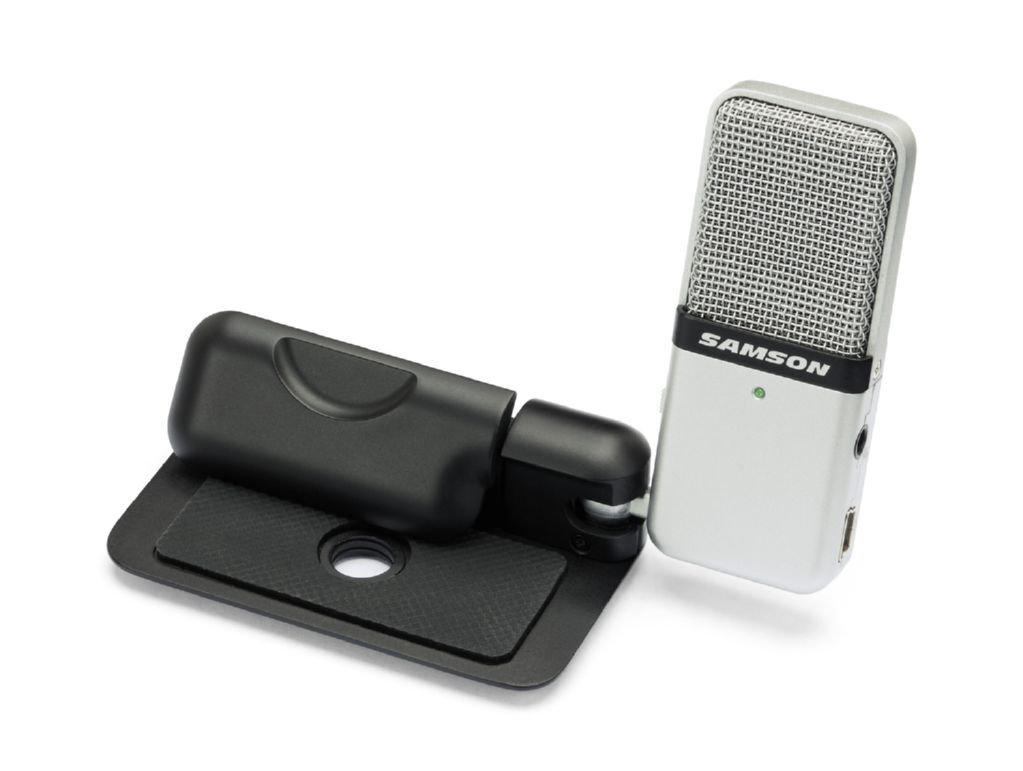




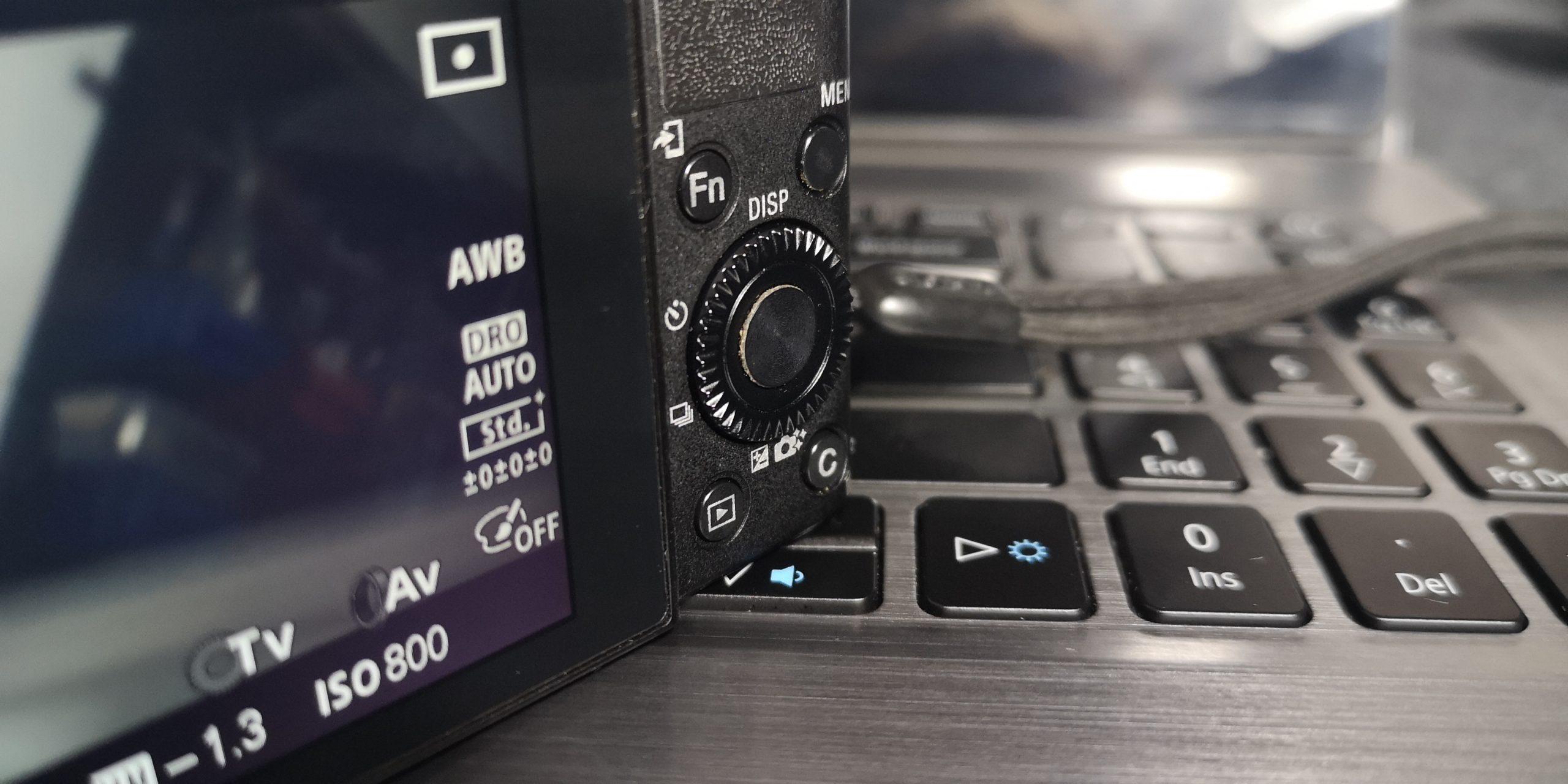
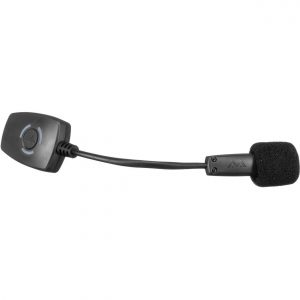
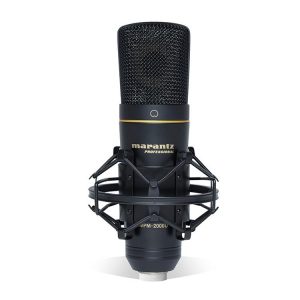
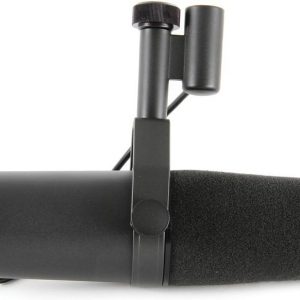
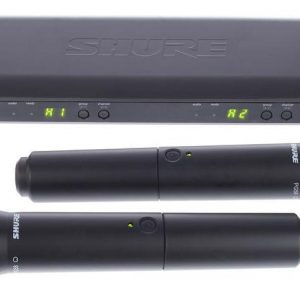
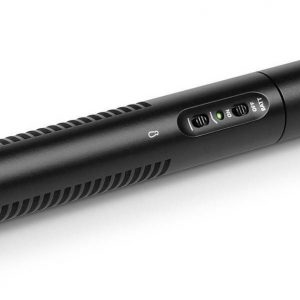
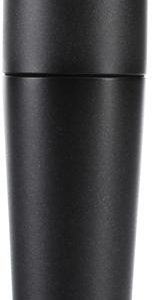
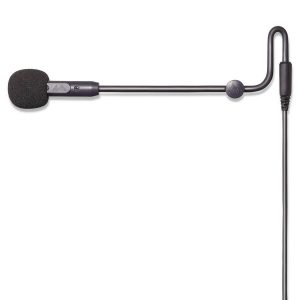
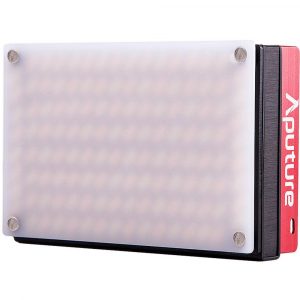
Anthony Hampton –
An excellent microphone. Very good sound and dynamics. It does not change the sound of the instruments and does not boost sibilants. Quite resistant to clipping. Before that, I had the AKG C3000b and Samson definitely better in my home studio.
I also have a Rod K2 and when tightening the sopranos and measures by a maximum of 1-3 db in Samson, you can hardly hear the difference in the mix and the price is 7 times higher than the Rode. I recorded the entire Maja & Matan CD on Samson and some said “you had to have extra microphones in your home studio …” yes, I recommend not only microphones but also other Samson products because I have and are always very happy because …
Jocelyn –
As someone who loves to record music and voiceovers, I am always on the lookout for a great microphone that I can easily carry around with me. That’s why I am absolutely in love with the Samson Go Mic!
This microphone is a condenser type, which means it’s perfect for recording vocals, acoustic guitar, and podcasts. It’s also super easy to use – all I have to do is plug it into my computer’s USB port and I’m ready to go. Yes USB! It’s so convenient!
What really sets the Samson Go Mic apart from other microphones is its size. This thing is tiny! It’s about the size of a matchbox, so it’s easy to toss in my backpack when I’m on the go. But don’t let its small size fool you. The Samson Go Mic is incredibly powerful and produces a rich, clear sound that rivals much more expensive microphones.
Overall, I would give the Samson Go Mic a rating of 5 out of 5 stars. It’s an excellent microphone that I would highly recommend to anyone who wants a portable, high-quality microphone for recording vocals, guitar, or podcasting. It definitely beats other microphones I have used in the past!
Brady –
I live in Toledo and work as a courier, which means that I need a portable microphone that can provide top-notch sound quality on the go. And Samson Go Mic is just the perfect fit for me! I bought this microphone in January, and I must say that it has exceeded all my expectations.
One of the most impressive features of Samson Go Mic is its Stereo Mono/Stereo option. This means that you can switch between two different settings, depending on whether you want to record in stereo or mono. This is very handy when you are recording music or interviews, and you want to capture the sound as accurately as possible.
But what really sets Samson Go Mic apart from its competitors is its versatility. This microphone is suitable for recording everything from vocals to acoustic instruments, podcasts, and even live performances. I have used it for all of these purposes, and I have never been disappointed with the sound quality.
I have tried many other microphones in the past, but Samson Go Mic is by far the best. Its small size makes it easy to carry around, but it still delivers crystal clear sound that rivals even larger and more expensive microphones. Plus, the fact that it is a USB microphone means that I can easily plug it into my laptop, making it ideal for recording on the go.
Lastly, I must mention that the delivery of this microphone to Toledo was fast and hassle-free. I received it within a week of placing my order online, and it arrived in perfect condition. I highly recommend Samson Go Mic to anyone looking for a versatile, high-quality microphone that won’t break the bank. It’s definitely worth the investment!
Levi –
The intrigue that surrounds me as I sit here, microphone in hand, ready to spill my secrets about the Samson Go Mic. But first, let us take a step back and ponder the darkness that lurks among us. The recent news of Nasen Saadi, a criminology student, guilty of murdering Amie Gray and seriously injuring Leanne Miles in Bournemouth’s beach stabbings sends shivers down my spine. What drives individuals to commit such heinous crimes? Is it the allure of power, the thrill of chaos, or perhaps something more sinister?
As I reflect on this morbid fascination, my mind wanders back to the setup of my trusty Samson Go Mic. A microphone that has become an extension of myself, a tool that has helped me unravel the mysteries of sound and unlock the secrets of the universe. Or so I thought.
During the initial setup, I encountered one peculiar problem – the microphone’s condenser type proved to be quite sensitive to background noise. The faint hum of my computer fan and the distant chatter of pedestrians outside would often bleed into my recordings, creating an unacceptable level of distortion.
Determined to find a solution, I turned to my friend Addison Curry for guidance. Her wise words echoed in my mind – A good microphone is only as good as its environment. She recommended investing in a pop filter and a dedicated recording space. I took her advice to heart and set up a mini studio in my home.
The results were nothing short of miraculous. The Samson Go Mic’s condenser type, once a liability, became an asset. I was able to capture the nuances of sound with unparalleled clarity. But what does this have to do with making money? Ah, my friend, it is quite simple really. With a good microphone like the Samson Go Mic, you can record high-quality audio that will make your voice sound like liquid gold.
Now, I’m not saying that the Samson Go Mic is the only key to success, but it certainly doesn’t hurt. In fact, I believe that with this microphone and a bit of determination, one can unlock a world of opportunities. So, my advice to those interested in buying microphones would be to invest in a good condenser type like the Samson Go Mic.
But beware, my friends, for there are many pitfalls along the way. Be prepared to spend time and money on equipment, software, and training. And always remember, the key to success lies not in the microphone itself, but in the ears of those who listen.
In conclusion, I highly recommend the Samson Go Mic for anyone looking to take their audio game to the next level. With its condenser type and high-quality sound, it is an investment that will pay dividends for years to come. So, go ahead, take a chance on this mysterious device, and see where it takes you.
And as I finish writing this review, I am left with more questions than answers. What drives individuals like Nasen Saadi to commit such atrocities? Is there something in the darkness that we cannot see? Only time will tell, but for now, I’ll stick to what I know – the Samson Go Mic is a force to be reckoned with.
Rating: 5/5
Jaiden –
This device exemplifies how innovation can harmonize utility with sustainability, offering remarkable power efficiency that minimizes energy waste and supports eco-conscious practices—gratitude is owed to its design for reducing environmental impact while maintaining reliability across scenarios. While amateurs may appreciate its ease of use and portability, professionals benefit from its consistent performance and durability, making it a versatile tool for both casual and high-stakes applications. In today’s news, a doctor faced consequences for his stark assessment of a suspect, highlighting the weight of words in judgment—a reflection on responsibility that parallels discussions around strategic roles in shaping collective futures; the article on Poland’s influence in Europe’s future invites contemplation: how might policies align with sustainable innovation to address global challenges? Read more here